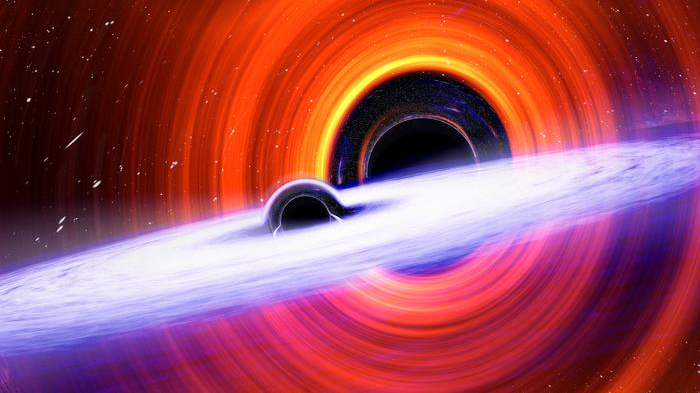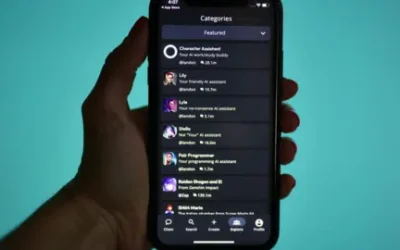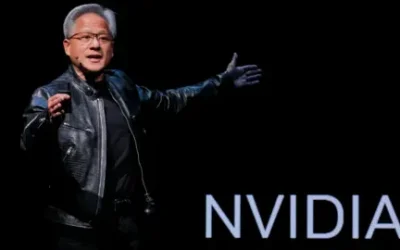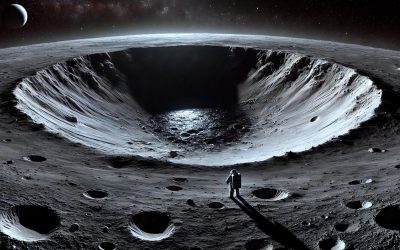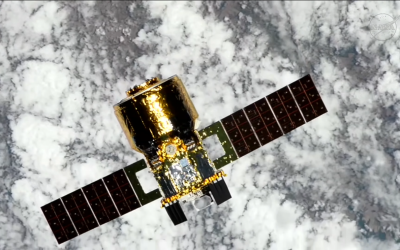Scientists have made an extraordinary discovery, detecting the subtle, yet powerful, gravitational wave signatures from two newly formed black holes. These cosmic behemoths were born from violent celestial collisions, each a product of two ‘parent’ black holes spiraling inward and merging. Adding to the significance, one of these merger events represents an unprecedented observation in astronomical history, marking it as the first of its kind ever witnessed.
The recent identification of nascent ‘baby’ black holes, alongside critical data concerning the four colossal parent black holes that spawned them, stems from the detection of gravitational waves. These profound ripples in the fabric of spacetime, direct evidence of the violent cosmic events that forged these celestial giants, were meticulously registered by a global network of advanced observatories: the Laser Interferometer Gravitational-Wave Observatory (LIGO), Virgo, and the Kamioka Gravitational Wave Detector (KAGRA).
**LIGO-Virgo-KAGRA Detects Pivotal Black Hole Merger, Reveals Record Spin**
The LIGO-Virgo-KAGRA (LVK) collaboration officially marked the commencement of its latest observation run with the detection of a pivotal black hole merger, designated GW241011, on October 11, 2024. This cataclysmic event represented the violent collision of a colossal black hole, weighing approximately 17 solar masses, with a companion of roughly seven solar masses.
The merger itself transpired an estimated 700 million light-years from Earth, sending ripples through spacetime that were ultimately captured by the LVK observatories. Analysis of the resulting gravitational wave signal not only allowed for the precise determination of the black holes’ individual masses but also unveiled a remarkable characteristic: the more massive of the two is among the fastest-spinning black holes ever recorded by the collaboration.
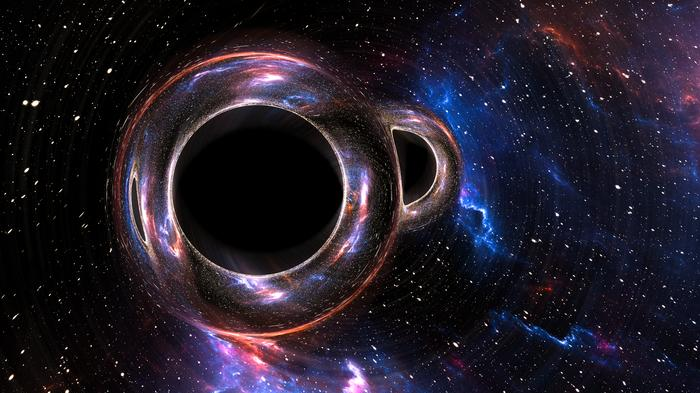
In a rapid follow-up to a groundbreaking detection, gravitational wave instruments on November 11, 2024, registered the distinct “scream” of another newly formed black hole. Designated GW241110, this signal originated from a violent cosmic collision between two colossal black holes — one 16 times and the other eight times the mass of our sun — approximately 2.4 billion light-years away.
Crucially, the analysis of GW241110 unveiled an unprecedented characteristic: one of the merging black holes was observed spinning in the opposite direction to its orbit around its partner. This marks the first time such a counter-rotation has ever been detected in a system of merging binary black holes, offering new insights into these extreme cosmic events.
Each new cosmic detection, such as an observed merger, offers profound insights into the universe, according to Carl-Johan Haster, an assistant professor of astrophysics at the University of Nevada, Las Vegas (UNLV).
Haster emphasized that these events serve a dual purpose: they are both significant astrophysical discoveries and invaluable laboratories for probing the fundamental laws of physics. While the existence of such binary systems had been theorized based on earlier observations, this particular detection provides the first direct evidence of their reality.
Collectively, these two events offer compelling evidence supporting the existence of a distinct category of cosmic phenomena: the so-called ‘second-generation’ black holes.
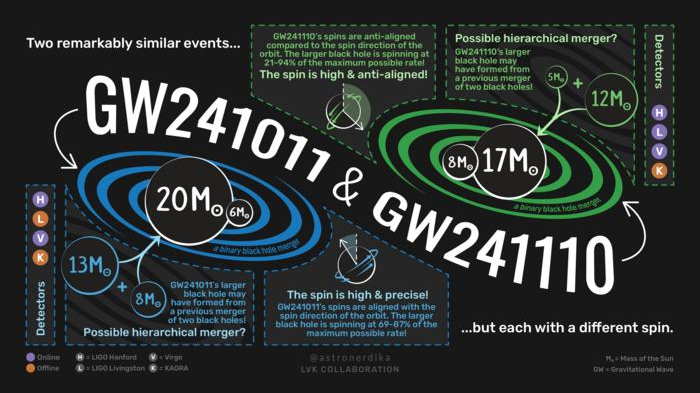
Two recently detected cosmic events, GW241011 and GW241110, are being hailed as particularly noteworthy discoveries by the LIGO-Virgo-KAGRA collaboration.
Stephen Fairhurst, a Cardiff University professor and spokesperson for the LIGO Collaboration, stated that these events stand out among the hundreds of observations made by the global network. What makes them so compelling is the unusual configuration of the merging black holes: in both instances, one black hole is not only considerably more massive than its companion but also exhibits rapid rotation.
Fairhurst explained that this specific combination provides “tantalizing evidence” suggesting these black holes were not primordial, but rather formed from previous, sequential black hole mergers.
The hypothesis that certain detected black holes are “second-generation” stems from two significant observations made during recent cosmic mergers.
Firstly, a notable size disparity was identified between the merging black holes. In both observed events, the smaller companion black holes were found to be nearly half the mass of their larger counterparts.
Secondly, and critically, the merger that produced the gravitational wave signal GW241110 exhibited an intriguing anomaly: the dominant black hole’s spin was oriented in the opposite direction to its orbital path. This counter-rotational alignment strongly suggests that this primary black hole was itself the product of a previous merger, providing compelling evidence for its “second-generation” classification.
Black holes are believed to achieve significant growth through a process dubbed “hierarchical merger,” characterized by successive collisions and amalgamations. This dynamic is primarily hypothesized to occur in regions teeming with celestial bodies, such as dense star clusters. In these crowded cosmic neighborhoods, the frequent encounters between black holes facilitate their repeated coalescence, resulting in the creation of progressively larger gravitational titans.
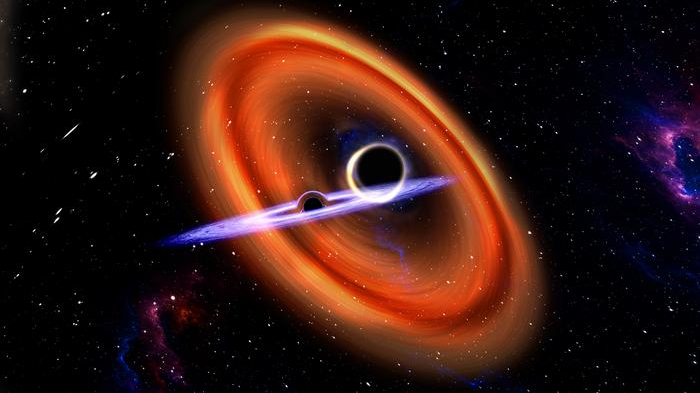
The gravitational wave event GW241011 presents scientists with an extraordinary opportunity to meticulously test the very boundaries of Albert Einstein’s 1915 theory of gravity, known as general relativity. This foundational theory is famously the intellectual bedrock from which both the concept of black holes and the prediction of gravitational waves originated.
A recent black hole merger, designated GW241011, has offered profound insights into the universe’s most extreme phenomena, significantly bolstering our understanding of gravity. The event revealed that the rapid rotation of one of the merging black holes caused a distinct deformation of the object itself. This unique distortion, in turn, left an unmistakable signature within the gravitational waves it emitted.
Researchers were able to rigorously compare these gravitational wave impressions with theoretical predictions derived from Albert Einstein’s General Relativity, specifically focusing on the work of physicist Roy Kerr. Kerr’s solution, which describes rotating black holes within Einstein’s framework, proved remarkably accurate. The black holes observed in GW241011 precisely conformed to Kerr’s mathematical model, providing crucial verification for his solution and, by extension, Einstein’s foundational theory under the most extreme cosmic conditions.
Moreover, this groundbreaking observation marked the third instance within a gravitational wave signal (GW241011) that scientists detected a “higher harmonic” – a subtle acoustic phenomenon often compared to the overtones found in musical instruments.
The LIGO-Virgo-KAGRA (LVK) collaboration suggests these gravitational wave signals could be pivotal in uncovering a phenomenon long predicted by theory but never before directly observed. Such a discovery, researchers believe, would represent new physics operating beyond the established boundaries of general relativity.

Moreover, the two black hole mergers responsible for these signals hold the remarkable potential to shed light on an entirely different scientific discipline: particle physics. This unexpected connection could offer unprecedented insights into the fundamental building blocks of the universe.
Scientists are harnessing the unique properties of rapidly rotating black holes to investigate the potential existence of ultralight bosons – a class of theoretical particles believed to lie beyond the current Standard Model of particle physics. The fundamental hypothesis suggests that if these elusive particles exist, they would subtly drain rotational energy from spinning black holes. Critically, the precise amount of energy extracted and the consequent deceleration of these cosmic giants would directly correlate with the bosons’ specific mass, offering a compelling pathway to their potential discovery.
A significant astrophysical discovery has emerged from the GW241011 merger event. Researchers have observed that one of the black holes contributing to this cosmic collision — a celestial body that itself was forged in an earlier, ancient merger millions or even billions of years ago — continues to exhibit remarkably rapid rotation. This sustained high-speed spin provides crucial new evidence, effectively ruling out a wide range of possible masses for ultralight bosons.
Following recent observations, the necessity for unified detector operations and enhanced sensitivities has been highlighted as critical by Francesco Pannarale. Pannarale, who serves as co-chair of the Observational Science Division for the LIGO-Virgo-KAGRA Collaborations and is a professor at Sapienza University of Rome, emphasized that these latest findings significantly advance our comprehension. He noted that data from the LIGO and Virgo instruments has provided profound new insights into the formation mechanisms of black hole binaries across the universe, as well as the fundamental physics that underpins their existence.
The upcoming instrument upgrades will allow for a significantly deeper exploration of various critical aspects, providing an unprecedented level of measurement precision.
Tuesday, October 28, marked the official release of the team’s research, which was featured in the Astrophysical Journal Letters.

